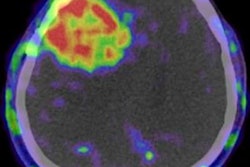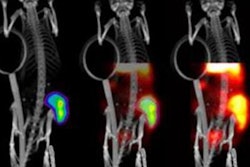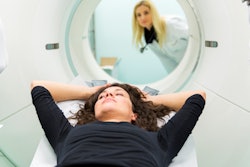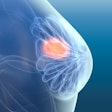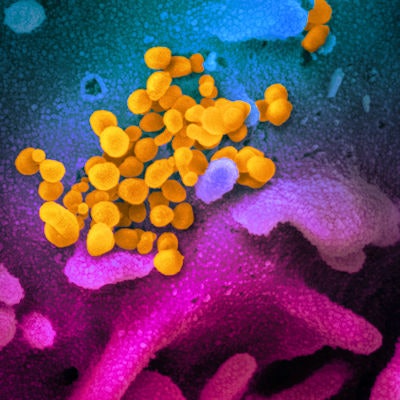
Using a particular low-energy radiotherapy approach with a radiolabeled antibody that binds to the SARS-CoV-2 virus shows promise for treating COVID-19 disease, according to a communication published July 17 in the Journal of Nuclear Medicine.
The technique, called Auger therapy, could offer a way to inactivate the SARS-CoV-2 virus, wrote a team led by Naga Vara Kishore Pillarsetty, PhD, of Memorial Sloan Kettering Cancer Center in New York City. Auger therapy uses low-energy electrons to damage cancer cells.
"Intuitively, many lessons learned from attempts to treat tumors with Auger emitters could be adapted for radiotherapeutically inactivating ... circulating SARS-CoV-2 in patients," the group wrote. "After all, tumor cells and SARS-CoV-2 share an important hallmark in their ability to evade patients' immune systems."
Radiotherapy is a key tool in treating and managing cancer, the group noted. In general, radiotherapy uses high-energy radioisotopes to target α or β particles in cancer cells. But if the SARS-CoV-2 virus behaves in similar ways as some tumors do, it might not necessarily respond to this type of high-energy therapy, according to Pillarsetty's team. That's where a lower-energy approach comes in.
"Auger electrons with energies between 0.5 keV and 10 keV are sufficiently energetic to penetrate deep into the virus producing direct and indirect radiological effects (i.e., therapeutic action)," the group wrote.
Pillarsetty and colleagues investigated whether a particular human antibody, CR3022, could be used with Auger therapy, hypothesizing that it would bind to the SARS-CoV-2 virus and therefore become a candidate for molecularly targeted radiotherapeutic treatment.
"The antibody is cross-reactive and conserved across several coronaviruses, making it ideal for targeting SARS-CoV-2," they wrote. "[It's also possible that] a radiolabeled CR3022 could be valuable for imaging, potentially serving as a direct, spatially resolved, contemporaneous and noninvasive readout of viral load within a patient."
The group labeled CR3022 with iodine-131 to create a molecule called [I-131]I-CR3022, then used a magnetic bead-based assay to test whether the molecule would attach to the virus. It did attach, confirming that it could serve as a molecularly-targeted probe for SARS-CoV-2 and could be used in COVID-19 patients for Auger radiotherapy or noninvasive imaging.
The investigators consider their study a "potent first step" toward a therapeutic option for SARS-CoV-2, they wrote.
"While it is unlikely that treatment of SARS-CoV-2, mediated by a radiotherapeutic Auger emitter, can lead to elimination of all virions, radiotherapy could be used in combination with other treatments and consequently improve outcomes," the team concluded.




